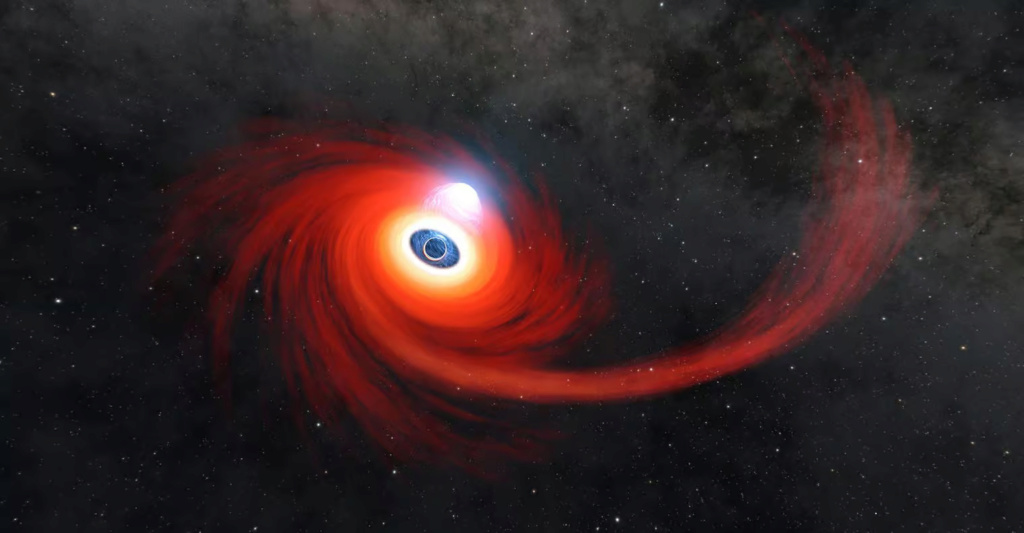A black hole devouring a star like you've never seen

Between this black hole and this star, a tidal rupture event like no other Researchers have observed a tidal rupture event — when a star is devoured by a black hole — like never before. Under almost ideal conditions because the AT2021ehb event occurred only 250 million light-years from our Earth and over a relatively short time. They watched as the star was stretched by the black hole's gravity until its gas formed a spaghetti that whipped like a whip around the black hole and eventually gave rise to a corona. This is what astronomers call the clouds of ultra-hot plasma that radiate in particular X-rays. A corona, for the very first time, not accompanied by jets of gas.
A black hole that puts a star on its menu. It happens every day. But this time, astronomers had a ringside seat. They pulled out data that could help them shed light on the eating habits of black holes.
When, unfortunately, astargets a little too close to a black hole , that's the tragedy. Without any form of trial, the monster engulfs him. Like an ogre devouring a reckless child. NASA researchers were recently able to attend the gargantuan meal of ablack holelocated just 250 millionlight yearsof our Earth. In the center of anothergalaxythat theMilky Way.
The relative proximity of the event -- it is the fifth closest example ever observed -- and the great sensitivity of the NuSTAR satellite -- for Nuclear Spectroscopic Telescopic Array -- allowed theastronomersto observe like never before the formation of a crown around theevent horizonof this black hole. The result of the destruction of the star by thegravityextreme of the black hole. A kind of structure made of particles with very highenergy, a hot plasma that emits in the X- ray range .
Such rupture events by effect oftide, as researchers call them, occur within weeks or even months. A short time over which observations can be conducted to better understand what happens to materials captured by a supermassive black hole before they are completely devoured.

MOST TIDAL BREAK-UP EVENTS—WHEN A STAR IS TORN APART BY A BLACK HOLE—THAT RESULT IN THE FORMATION OF A CORONA ALSO PRODUCE JETS OF MATERIAL THAT SPREAD OUT INTO SPACE AWAY FROM THE BLACK HOLE AT ITS POLES. AT2021EHB IS THE FIRST CONFIRMED EXAMPLE OF A CORONA FORMING WITHOUT JETS DURING A TIDAL RUPTURE EVENT.
A crown, but no jet
Astronomers here describe the event called AT2021ehb. It was first detected on March 1 , 2021, and occurred on a black hole about 10 million times the mass of ourSun. To get an idea, it's the equivalent of the difference between a bowling ball and the Titanic, say the researchers. Easy, under these conditions, to understand that the side of the star closest to the monster was pulled harder than the far side. Until the star turns into spaghettigaswarm.
According to astronomers, during a tidal rupture event, the gas flow whips like a whip around the black hole. Colliding with itself. Possibly creating shock waves and outward gas flows. The whole produces visible light as well as theultravioletandX-rays. The material then begins to settle in a disk revolving around the black hole like water surrounding adrain, with friction generating low-energy X-rays. In the case of AT2021ehb, this series of events took place over just 100 days.
Source : websites

